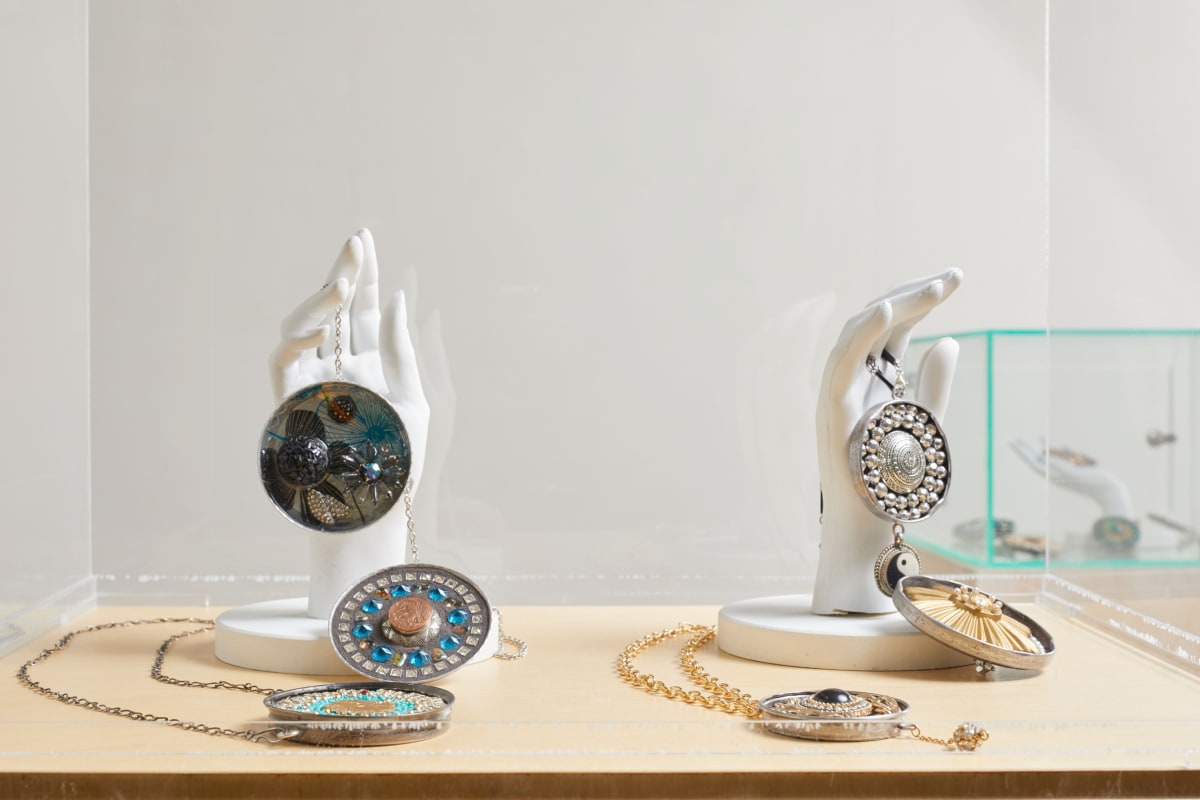Robert Ebendorf and Joe Price have been pen pals for quite a while, but in the midst of the pandemic, their correspondence leveled up. They went from swapping postcards and collages to trading packages full of in-process brooches and pendants. In Santa Fe, Bob would use his legendary metalwork skills to transform jar lids into wearable objects, and then pack them into boxes full of unconventional art materials. In South Carolina, Joe would comb through these treasure chests and use his formidable beading skills to complete Bob’s compositions. It's a conversational process that Bob describes as a "studio dance." The result is a brand new jewelry collection, JoeBob, that’s a witty and colorful tribute to a 20-year friendship.
Joe Price
Joe Price was born in South Carolina in 1956, and currently resides there. After graduating from Business School at the University of South Carolina in 1978, he went to work for a local software development company for 38 years before retiring. During this time, Price traveled extensively in the United States and Europe, collecting paintings, ceramics, sculptures and studio jewelry with his partner. One of the first pieces they collected was a nail and pearl ring by Robert Ebendorf.
Some time later, Price and his partner met Ebendorf while he was teaching at a craft school and their friendship began. Price and Ebendorf struck up a pen pal correspondence, which later developed into exchanging collages.
Price and his partner frequently participated in jewelry conferences and workshops such as the East Carolina University Material Topics Symposium. Price also participated in the Snail Mail enamel project, which was acquired by the Enamel Foundation, and assisted Ebendorf with an assemblage workshop at a craft school. During the Covid-19 pandemic, Ebendorf suggested they step up their collage game and begin making jewelry collaboratively using jar lids, which became the JoeBob series.
Robert Ebendorf
For the past twenty-five years, Robert Ebendorf has been repurposing existing materials by devising ingenious uses for the discarded and discovering ways to make the used into the new. Known for contemporary jewelry that includes everything from buttons to crab claws, he continues his investigation of “representations.”
The artist’s conceptual approach to jewelry questions the nature of adornment itself and explores alternative materials and ideas about the preciousness of jewelry. The creativity of his jewelry lies not only in the intellectual repositioning of familiar objects, but more in the physical transformations of materials that astonish the viewer. It is exactly this sense of astonishment that gives his pieces their value. Ebenorf’s objects are not simply about refashioning the mundane, as they elevate the value of what might otherwise be thrown away or overlooked. By reassessing the meaning of the artifacts of daily life, his pieces often reverse the idea of what is precious. If the purpose of art is to locate and reaffirm values in our world, then this work is a most relevant mode of contemporary expression.
Ebendorf was born in 1938 in Topeka, Kansas. He received his BFA in 1960 and his MFA in 1962, both from the University of Kansas, Lawrence. Following graduation, he received a Fulbright Fellowship to study at the State School of Applied Arts and Crafts in Norway. He has taught at the University of Georgia (1967- 71) and State University of New York at New Paltz (1971-88), and currently serves as the Belk Distinguished Professor in the Arts at the East Carolina University in Greenville, North Carolina. He has received many awards over the last several decades, such as the Louis Comfort Tiffany Grant (1966/67), the American Craft Council Fellowship for Achievement in Craft and Commitment to the Craft Movement (1995), and the North Carolina Governor’s Award in the Arts (2010). He is a Co-Founder and former President of the Society of North American Goldsmiths (SNAG), and was recently invited by the Smithsonian Institution to participate in its Archives of American Art Oral History Program.
Numerous collections worldwide house Ebendorf’s work, including the Metropolitan Museum of Art, New York; The Victoria and Albert Museum, London; the Museum of Fine Arts, Boston; The Mint Museum of Craft Design, North Carolina; Le Musée des Arts Décoratifs de Montreal; National Museum of Wales and The Schmuck Museum in Pforzheim.




